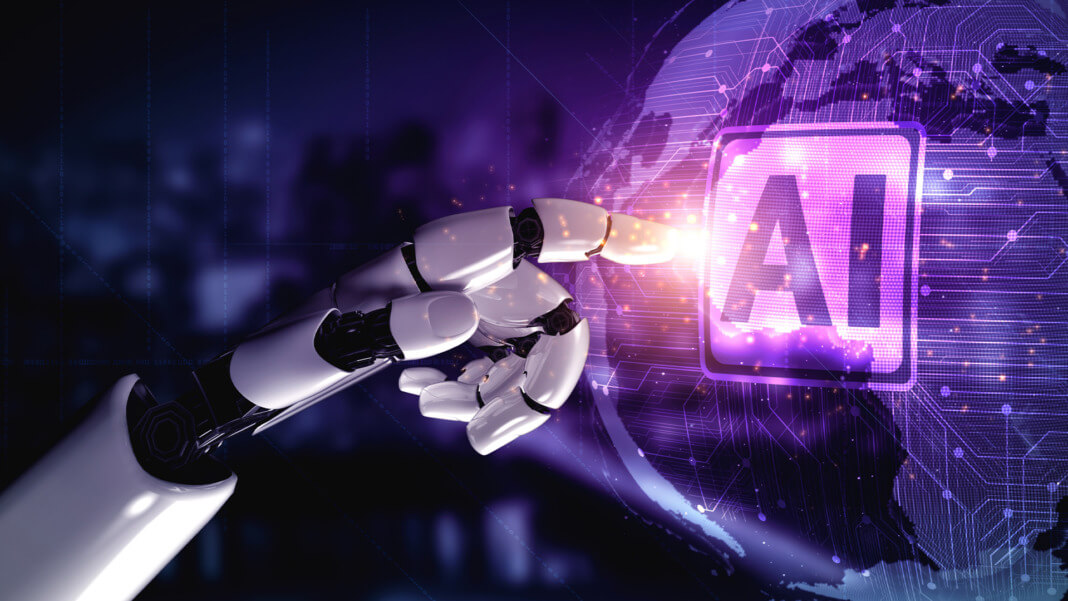Venturing into artificial intelligence (AI), one encounters a relatively fresh facet – generative AI. This isn’t your conventional AI; it’s an entity capable of crafting new content by drawing insights from its training data. Its remarkable ability to generate human-like writing, images, audio, and video has turned heads since the first generative AI consumer chatbot debuted in the fall of 2022. This marked a pivotal point, ushering in a new era where machines could mirror human-like creativity with an uncanny finesse.
The term “Generative AI” (GAI) represents a subset of AI technologies that have recently evolved to respond to text prompts with a breadth of responses ranging from the simple to the complex. While various generative AI tools can generate new audio, image, and video content, text-oriented conversational AI has sparked imaginations. The experience resembles conversing with a human counterpart when interacting with text-trained generative AI models. The exchange of ideas and knowledge feels natural, narrowing the gap between man and machine.
The spotlight on generative AI brightened with the introduction of ChatGPT, a chatbot grounded in OpenAI’s GPT-3.5 neural network model, on November 30, 2022. Conversational AI is familiar, tracing its roots back to the mid-1960s with the advent of ELIZA by the Massachusetts Institute of Technology. However, earlier incarnations like ELIZA were rule-bound, with responses tethered to predefined rules and templates. In contrast, generative AI models are like blank slates, ready to be imprinted with the essence of real-world data, independently developing intelligence to generate novel content in response to prompts. This evolution is significant yet shrouded in mystery, as even AI experts often ponder the self-evolving algorithms and tuning that occur during the training phase.
The application spectrum of generative AI
Peeling back the layers of generative AI reveals many applications awaiting exploration. It’s more than a tool; it’s a toolbox with potential, ready to be deployed across various domains. With generative AI, creating new product designs, optimising business processes, and even conjuring up entire virtual worlds becomes attainable. It’s a tool with substantial practical applications, turning the erstwhile impossible into tangible realities. The impact it’s slated to have on the world of AI is profound and far-reaching, and we are merely at the cusp of uncovering its full potential.
Automation is one facet of generative AI that entices big and small enterprises. The promise is tantalising – the ability to automate knowledge work, a domain that has largely resisted the charm of automation until now. Generative AI tools are changing the dynamics of knowledge work automation. They can collaborate with human partners to produce human-like writing, images, audio, or video in response to plain English text prompts. The magic lies in generating content that represents practical work, blending machines’ precision with humans’ creativity, and fostering a collaborative environment that was hitherto unimagined.
The applications span customer operations, marketing and sales, software engineering, and research and development. The revenue-raising prospects are discernible across industries, with high-tech, banking, pharmaceuticals and medical products, education, telecommunications, and healthcare being the notable beneficiaries. The narrative of generative AI is not about replacing humans but augmenting human capabilities, creating a synergy that propels productivity, innovation, and efficiency to new heights. It’s about envisioning a world where generative AI and humans co-create, each amplifying the other’s capabilities.
Economic echoes of generative AI
The economic implications of generative AI are hard to overlook. A report from McKinsey & Company in June 2023 elucidated that generative AI could inject between US$6.1 to US$7.9 trillion into the global economy annually by ramping up worker productivity. To contextualise, the annual economic potential from all AI technologies is estimated to be between US$17.1 and US$25.6 trillion. Amidst the shimmering promise of economic growth, generative AI is a formidable player, albeit just a fragment of the colossal AI arena.
However, every action has a reaction. The remarkable productivity prospects of generative AI are intertwined with potential business risks such as inaccuracy, privacy violations, and intellectual property (IP) exposure. There’s also the spectre of large-scale economic and societal disruption. The productivity improvement is likely to materialise with substantial worker retraining efforts. The flip side is the potential dislocation from current jobs. This concern is fuelling the advocacy for rapid adoption of AI regulations by government policymakers and technology industry executives around the globe.
The narrative doesn’t end at economic productivity; it extends to the work culture and job dynamics. The advent of generative AI is poised to trigger a seismic shift in work. Individual roles are set to metamorphose, necessitating the acquisition of new skills. While some jobs might fade into oblivion, history shows that monumental technological shifts often usher in new (and higher-value) jobs. The ripple effects of generative AI on the economy and job market are profound, necessitating a balanced, well-thought-out approach to harness its potential while mitigating the associated risks.
The technical foundation of generative AI
The underpinning force behind generative AI is a blend of neural network-based machine learning trained on vast datasets. The essence is to create novel text, image, video, or audio content in response to users’ natural language prompts. The vastness of the training data for generative AI is orders of magnitude larger than traditional AI. It learns patterns from the data, adapting its behaviour and harnessing that ‘knowledge’ to craft fresh and original content. This trait sets it apart from the conventional AI models.
The distinction between generative AI and traditional AI is palpable. While traditional AI systems are honed to excel at specific tasks, generative AI has a broader horizon; it’s about creating new and original content that isn’t found in its training data. Traditional AI often operates within supervised learning, where the data is labelled, and the AI software is guided explicitly. In contrast, the training ground for generative AI is unsupervised learning, where the data is unlabeled, and the AI software navigates the learning curve without explicit guidance.
The financial commitments of training foundational models for generative AI are hefty. Embarking on the generative AI voyage requires a substantial financial reservoir, with an AI researcher describing the training of foundational models as “obscenely expensive.” The ballpark figure hovers around US$100 million for the hardware requisites alone, not to mention the cloud services costs, given that most AI development transpires in the cloud. The monumental data volumes required for training further accentuate the financial difficulties.
The road unfolding ahead
Generative AI isn’t a fleeting spectacle; it’s a paradigm shift poised to redefine the contours of technology, business, and society. The viral sensation that it created in November 2022 isn’t temporary; it’s a precursor to the profound impact it’s slated to have on the global economy. The anticipation is palpable, and the promise is tantalising. Market researchers are unanimous in their projection – generative AI is set to be a game-changer, dramatically accelerating productivity growth for knowledge workers, a domain that had hitherto resisted automation.

The fascination with generative AI isn’t confined to its potential economic growth; it extends to the creative vistas it unveils. The world is now a playground where individuals and enterprises are experimenting with writing text, making music, crafting pictures, and creating videos using various generative AI models. Each model specialises in a particular domain, yet collectively, they represent a technological marvel redefining the boundaries of what’s conceivable. The excitement surrounding generative AI isn’t just about the technology; it’s about the possibilities it unfurls, the creative horizons it expands, and the societal norms it challenges.
However, amidst the awe-inspiring potential lies a realm of challenges and risks. The potential for “hallucinating” incorrect or false information and inadvertently violating copyrights are concerns that cast a shadow. The societal fabric, too, is set to undergo a metamorphosis, with job roles restructuring and some jobs possibly facing obsolescence. The road ahead is laden with both promise and perils. It beckons a prudent approach, where the excitement is tempered with caution, the adoption is paced with regulation, and the journey of generative AI is navigated with optimism and pragmatism.





